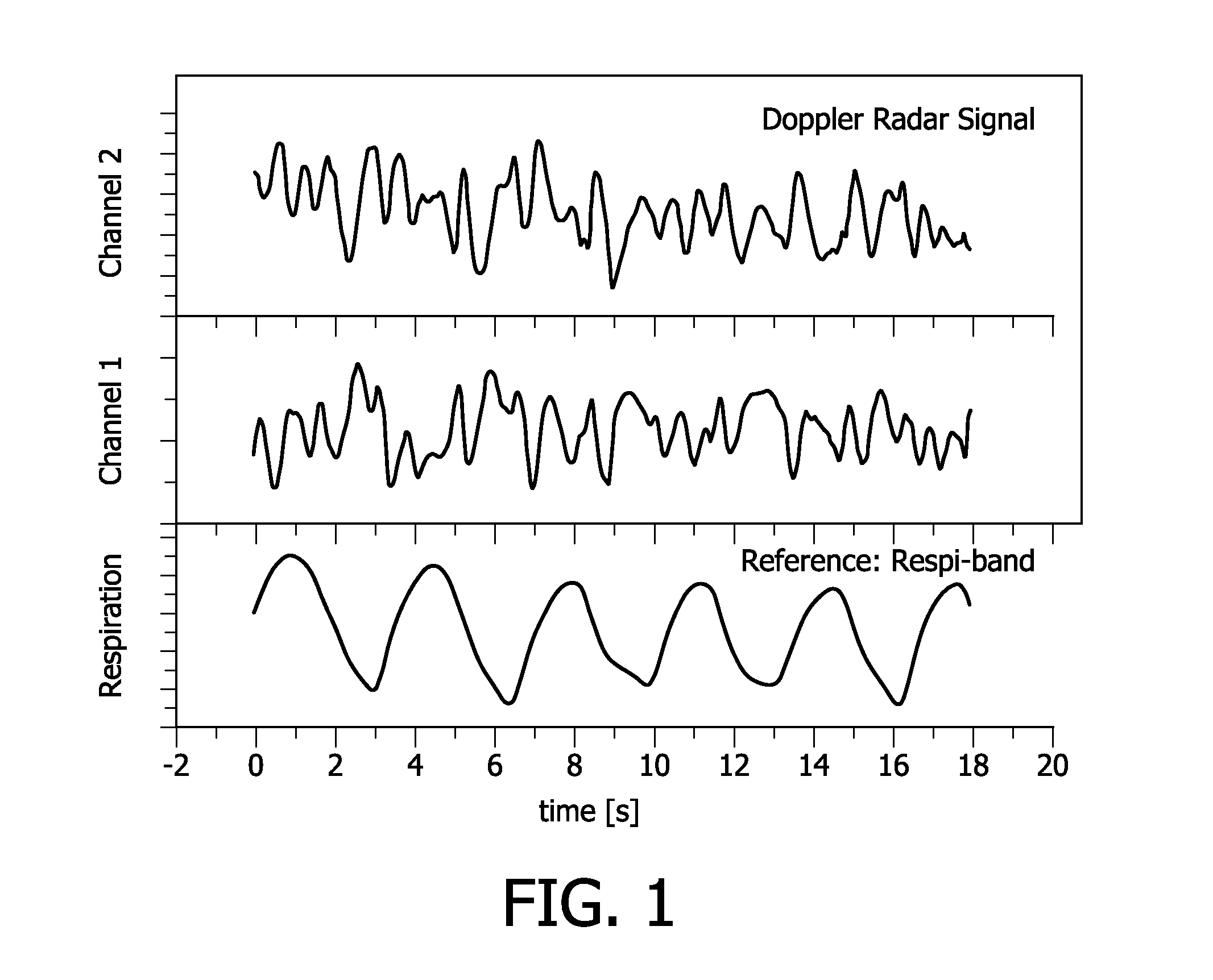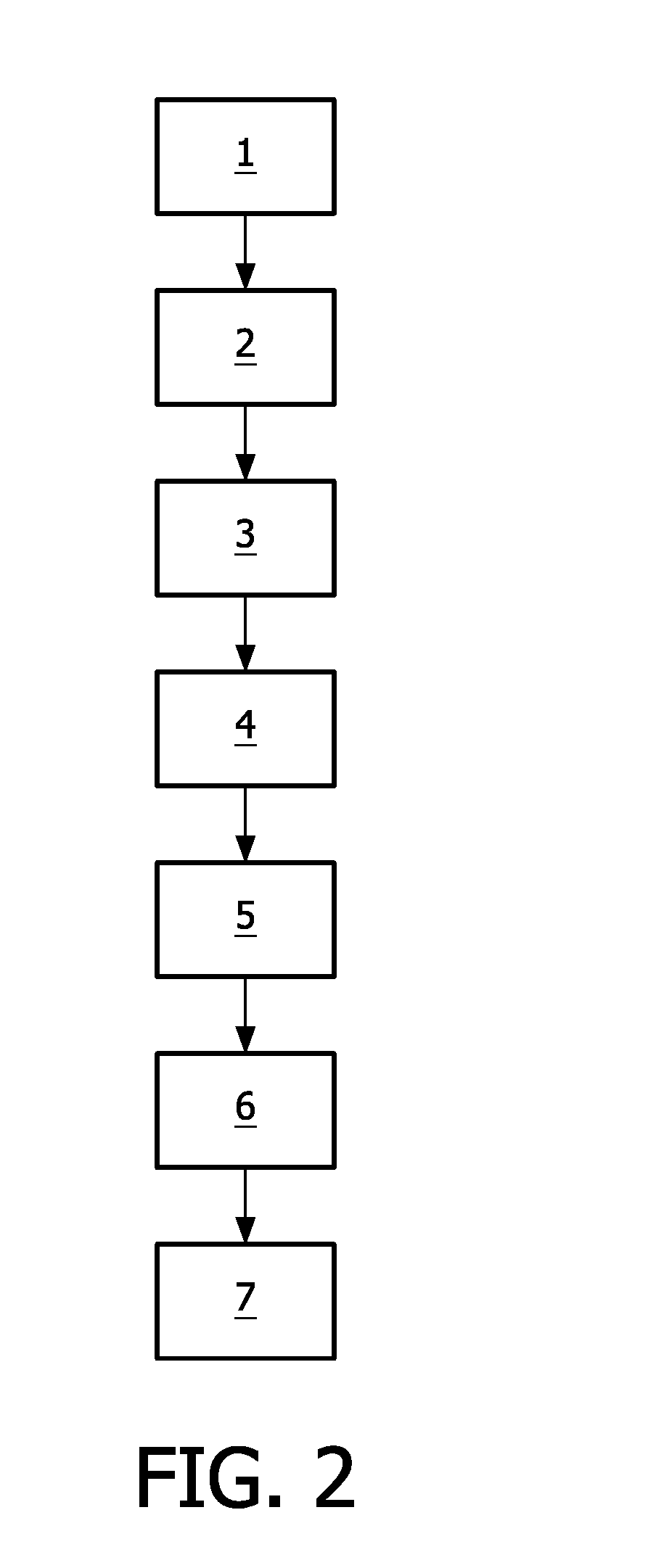Contactless respiration monitoring of a patient
a patient and contactless technology, applied in the field of respiration monitoring of patients, can solve the problems of difficult correct and reliable interpretation of signals, more effort in the development of intelligent signal analysis, and inapplicability of state-of-the-art detection schemes, etc., and achieve the effect of convenient handling
- Summary
- Abstract
- Description
- Claims
- Application Information
AI Technical Summary
Benefits of technology
Problems solved by technology
Method used
Image
Examples
Embodiment Construction
[0041]The two sensor signals coming from a two-channel Doppler radar sensor can be modeled by the following equations:
x1(t)=a·∑k=1N1Dk(t)γcos(Θk(t))(1)x2(t)=b·∑k=1N1Dk(t)γcos(Θk(t)+2Φ1)(2)
[0042]The cosine factors represent the local amplitudes of the reflected electromagnetic waves. The signal amplitudes a and b differ, because of different sensitivities of the separate channels. The influence of the changing sensor / target distances Dk(t) is modeled by an exponential factor γ. The phase difference 2Φ1 is determined by the specific Doppler sensor used. The timely varying phase Θk(t)
Θk(t)=4πλ(∫0tvk(t′)t′+Ξk)(3)
[0043]is related with the Doppler effect as a sum of signals from N reflectors moving with velocity components vk(t) relevant for the Doppler shift and the sensor / reflector distance Θk for t=0. In the following, a single moving reflector is analyzed, which means that the functions D(t) and Θ(t) are simplified. Sensor / reflector distance D(t) and phase Θ(t) are then linearly relat...
PUM
 Login to View More
Login to View More Abstract
Description
Claims
Application Information
 Login to View More
Login to View More - R&D
- Intellectual Property
- Life Sciences
- Materials
- Tech Scout
- Unparalleled Data Quality
- Higher Quality Content
- 60% Fewer Hallucinations
Browse by: Latest US Patents, China's latest patents, Technical Efficacy Thesaurus, Application Domain, Technology Topic, Popular Technical Reports.
© 2025 PatSnap. All rights reserved.Legal|Privacy policy|Modern Slavery Act Transparency Statement|Sitemap|About US| Contact US: help@patsnap.com



